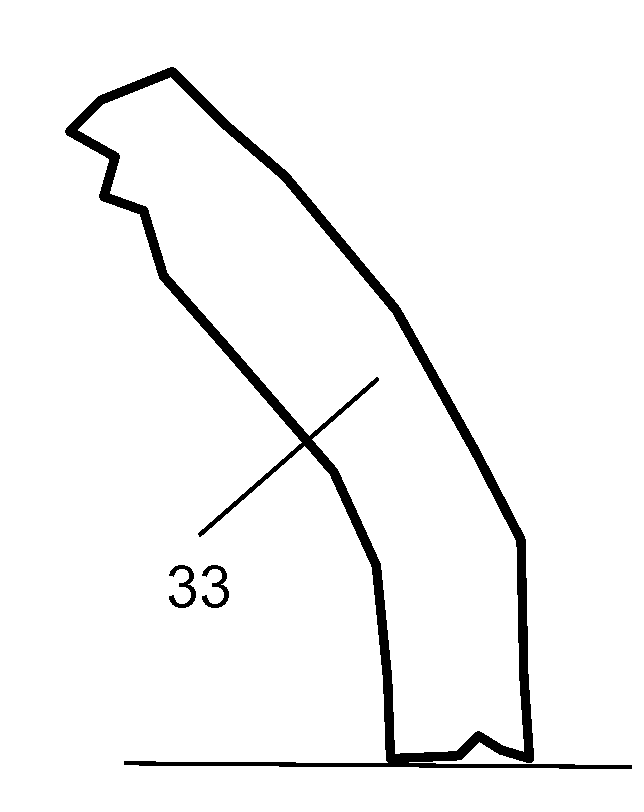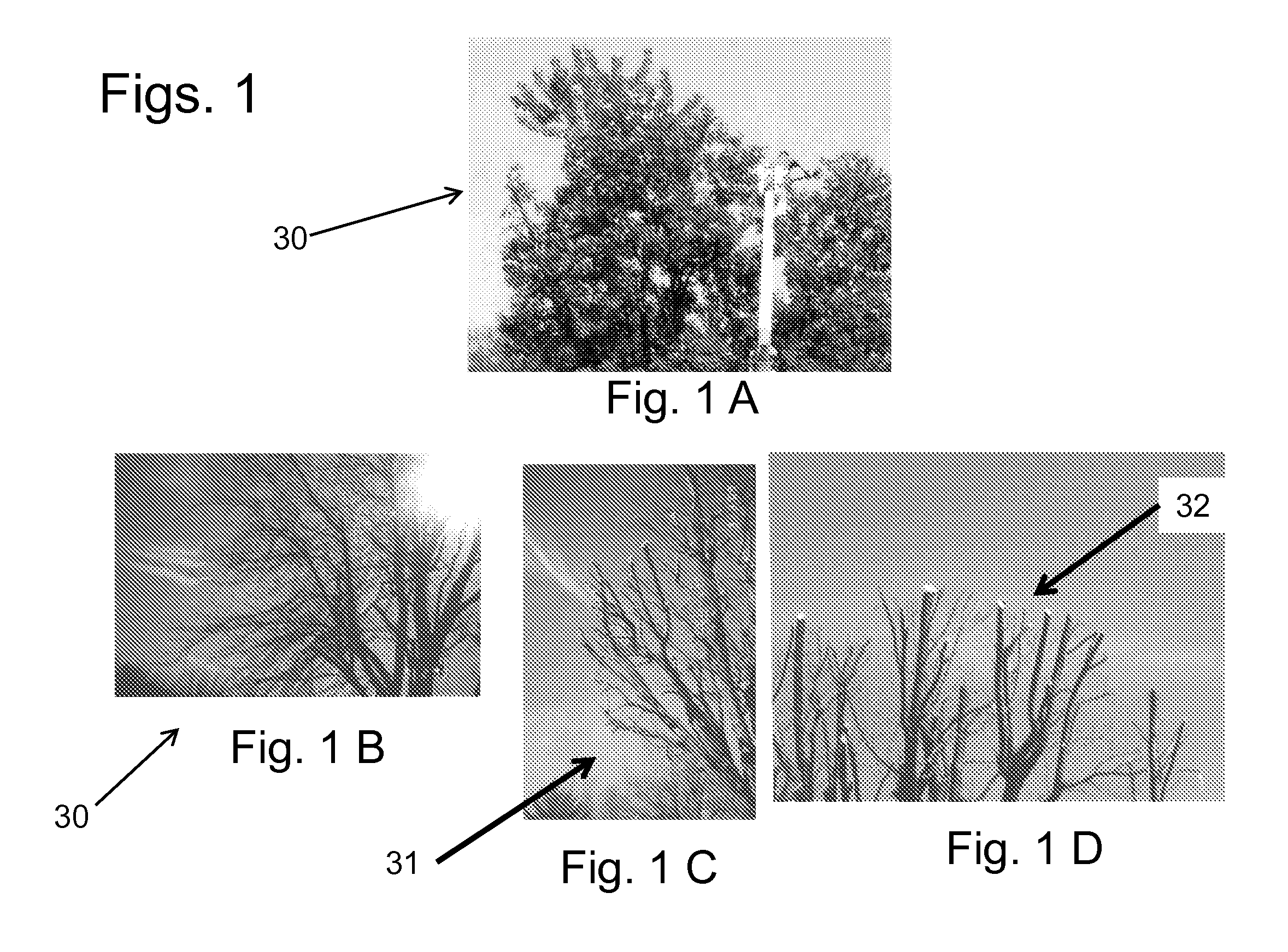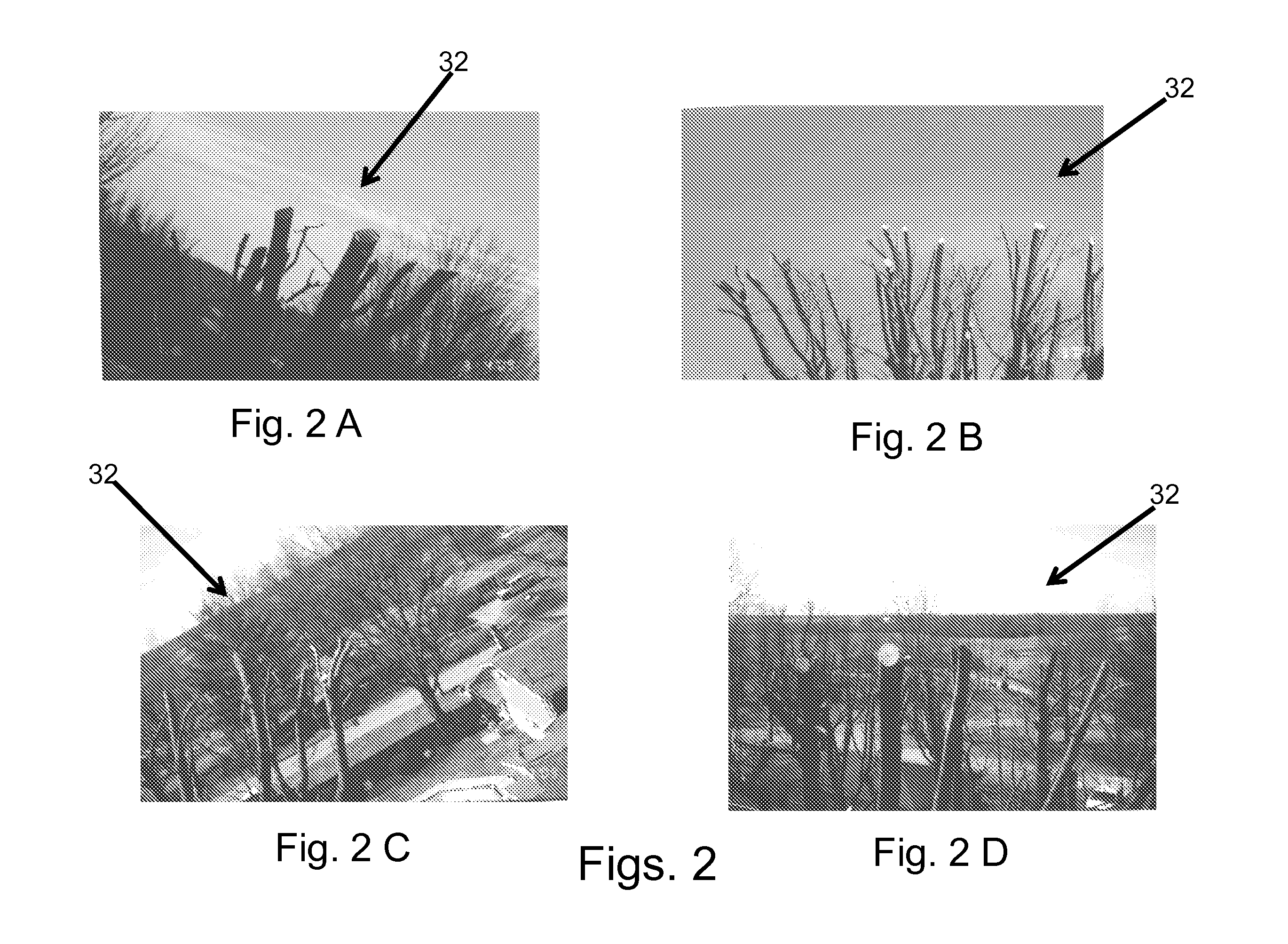Convex Cutting and Trimming Method for Shaping Trees
a tree and limb cutting and trimming technology, applied in the field of angular trimming of trees, can solve the problems of flat, straight cut, and further decay of tree limbs and trunks, and achieve the effect of not helping to form, flat and straight cu
- Summary
- Abstract
- Description
- Claims
- Application Information
AI Technical Summary
Benefits of technology
Problems solved by technology
Method used
Image
Examples
Embodiment Construction
[0037]The method and process invention presented is Convex Cutting and Trimming Method for Shaping Trees. This method to a new method to increase tree survival by controlling radial growth patterns of trimmed trees. Improvements from labor, loss of trees due to poor trimming, and other savings in fuel due to less frequent trimming yield concrete financial gains in this method of doing trimming compared to typical horizontal trimming processes.
[0038]The preferred embodiment of Convex Cutting and Trimming Method for Shaping Trees 80 is comprised of several steps of observation as to the tree trimming needs, the characteristics of the tree and its limbs, and a precise cutting as described as:
StepDescription1Observe an existing growth of vegetation and itsshape2Determine Canopy desired3Determine obstructions (powerlines, buildings, etc.)to avoid with a clearance4View limbs and branches to determine direction ofnatural growth5Decide direction of radial growth desired (ie -perpendicular t...
PUM
 Login to View More
Login to View More Abstract
Description
Claims
Application Information
 Login to View More
Login to View More - R&D
- Intellectual Property
- Life Sciences
- Materials
- Tech Scout
- Unparalleled Data Quality
- Higher Quality Content
- 60% Fewer Hallucinations
Browse by: Latest US Patents, China's latest patents, Technical Efficacy Thesaurus, Application Domain, Technology Topic, Popular Technical Reports.
© 2025 PatSnap. All rights reserved.Legal|Privacy policy|Modern Slavery Act Transparency Statement|Sitemap|About US| Contact US: help@patsnap.com



